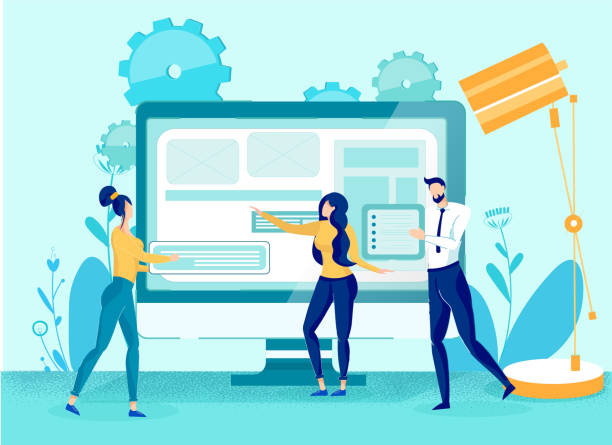The Importance of Corporate Website Design in Today’s World
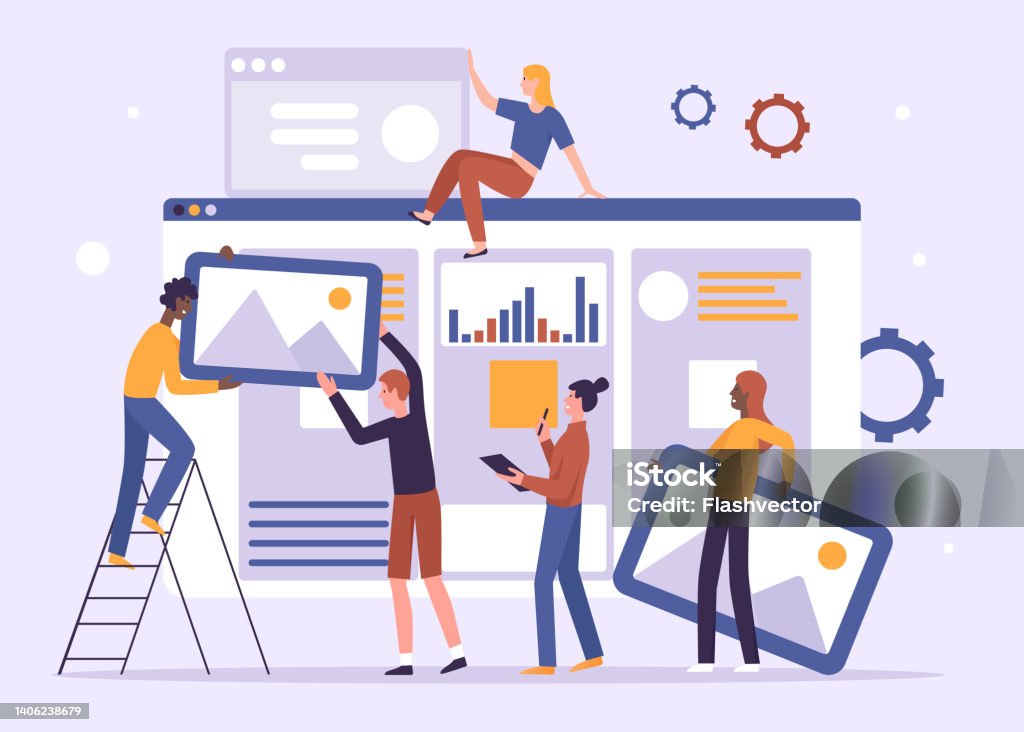
In today’s digital age, having a website is not merely an option, but an undeniable necessity for every business.
#Corporate_Website_Design goes beyond a simple online presence; it is a strategic investment that enables businesses to present their brand identity in the best possible way, connect with their audience, and discover new opportunities for growth.
A corporate website is the first point of contact for many potential customers with your brand.
It is your virtual storefront, available 24/7 and showcased without geographical limitations.
Imagine how a company without a valid physical address or contact number would be perceived in the real world; in today’s world, not having a professional website diminishes your credibility and accessibility to the same extent.
The website is the primary platform for publishing key information about your products or services, company history, values, and even current news and events.
This helps customers gain a deeper understanding of what you offer and build greater trust in your brand.
On the other hand, a strong corporate website design allows you to gain a significant competitive advantage in the market.
In a highly competitive market, a company with an attractive, user-friendly, and rich content website will undoubtedly outperform its rivals.
This not only helps attract new customers but also increases the loyalty of existing ones.
Furthermore, a website allows for the collection of valuable data on user behavior, which can be highly effective in improving future marketing and sales strategies.
In fact, every part of a website, from the homepage to product pages and contact forms, can act as a powerful tool for engaging and converting users into loyal customers.
Therefore, investing in corporate website design is not just an expense, but a smart investment for the future and sustainability of your business, which will yield significant returns.
The importance of this issue is such that many companies form dedicated internal teams or collaborate with specialized web design agencies to ensure their website performs optimally.
A successful website is a 24-hour marketing tool that allows you to reach your audience anytime, anywhere, and deliver your message to them.
Does your company’s website create a professional and lasting first impression on potential customers? Rasawb, with its professional corporate website design, not only represents your brand’s credibility but also paves the way for your business growth.
✅ Building a powerful and trustworthy brand image
✅ Attracting target customers and increasing sales
⚡ Get free consultation
Key Elements of a Successful Corporate Website Design

For a corporate website design to be truly successful, special attention must be paid to several key elements that all work hand-in-hand to provide an unparalleled and effective user experience.
The first and perhaps most important element is responsive design.
Given the increasing use of mobile devices for internet access, your website must be designed to display correctly and be user-friendly on every screen size, from desktops to tablets and smartphones.
Ignoring this aspect can lead to losing a large portion of your audience.
The second element is an excellent User Experience (UX) and User Interface (UI).
The website should be intuitive, easy to navigate, and pleasant to use.
Users should be able to easily find the information they need and navigate the site without confusion.
This includes clear menu structures, prominent Call-to-Action (CTA) buttons, and logical page layouts.
Third, high-quality and engaging content is crucial.
Content is king; therefore, your text, images, and videos must be relevant, informative, unique, and engaging.
Up-to-date and appropriate content not only helps attract users but also improves your site’s ranking in search engines.
The fourth factor is website loading speed.
Today’s users are impatient, and a slow website can quickly discourage them and cause them to visit a competitor’s site.
Optimizing images, using caching, and choosing a reliable hosting provider are among the actions that help improve speed.
Fifth, Search Engine Optimization (SEO) should be included from the very beginning of the business website design process.
Using appropriate keywords, SEO-friendly URL structures, and correct meta tags are important considerations.
Sixth, website security is crucial.
With increasing cyber threats, protecting user data and maintaining site integrity through SSL certificates, firewalls, and regular updates is essential.
Finally, scalability must be considered.
A successful corporate website should be able to adapt to your business growth and allow for the addition of new features, pages, and sections in the future.
Alongside these, integrated branding through consistent use of logos, colors, and fonts across all pages helps strengthen your company’s visual identity.
All these elements together ensure that your website not only looks good but also contributes to your business objectives and provides a positive and lasting experience for visitors.
It is this comprehensive approach to corporate website design that makes the difference.
Choosing the Right Platform for Business Website Design
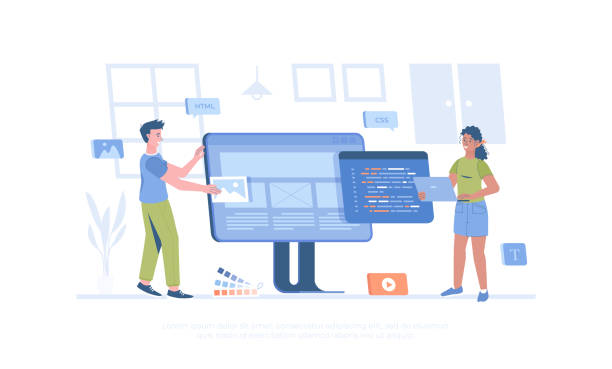
Choosing the right platform for designing a corporate website is one of the most crucial decisions to make at the beginning of a project, as this choice directly impacts costs, capabilities, scalability, and ease of website management in the future.
Numerous options are available in the market, each with its own advantages and disadvantages.
Among the most popular platforms are Content Management Systems (CMS) such as WordPress, Joomla, and Drupal, all three of which are open source and offer high flexibility.
WordPress, due to its ease of use, extensive ecosystem of plugins and themes, and large user community, is often suitable for small and medium-sized businesses and even some large companies.
However, it requires regular maintenance and updates, and if not optimized correctly, it may encounter performance issues.
Joomla and Drupal are also powerful platforms that are more complex and better suited for larger, more intricate projects with higher security and performance requirements.
In addition to open-source CMSs, SaaS (Software as a Service) platforms like Wix and Squarespace also exist, allowing you to design your website without needing coding knowledge.
These platforms are ideal for small businesses looking for quick and easy setup, but they typically have limitations in customization and scalability.
For companies with very specific needs or projects requiring complex integrations with internal systems, custom website development using frameworks like Laravel or Django might be the best option.
This approach offers maximum flexibility and control but is naturally more expensive and time-consuming.
When choosing a platform for corporate website design, factors such as budget, timeline, current and future business needs, requirements for specific functionalities (like e-commerce, CRM, marketing automation), the skills of the internal team, and technical support options should be considered.
A suitable platform should be able to meet your business objectives and lay the groundwork for future growth and development.
This decision should not be taken lightly and is best made in consultation with business website design specialists.
Comparison of Common Corporate Website Design Platforms
| Feature | WordPress | Joomla | Drupal | Custom Development |
|---|---|---|---|---|
| Ease of Use | High (suitable for beginners) | Medium | Medium to High (requires technical knowledge) | Low (requires developer) |
| Flexibility and Scalability | High (via plugins) | Very High | Very High | Maximum (any desired functionality) |
| Initial Cost | Low to Medium | Medium | Medium to High | High |
| Maintenance and Security | Requires regular updates | Requires regular updates | High security, requires specialized maintenance | Requires continuous specialized maintenance |
| Suitable for | Small and medium businesses, blogs | Medium and large businesses, portals | Large organizations, government, universities | Companies with unique and complex needs |
The Role of User Experience (UX) and User Interface (UI) in Corporate Website Design
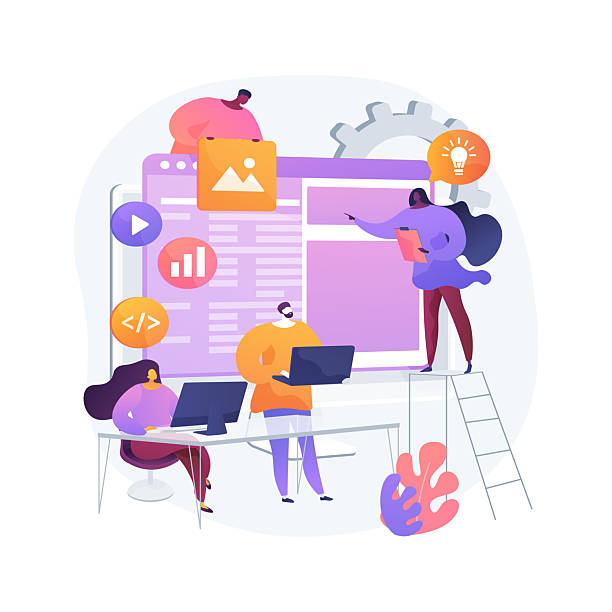
In today’s competitive world, merely having a website is not enough; one must ensure that the website not only looks aesthetically pleasing but also provides a pleasant and efficient experience for users.
This is where the role of User Experience (UX) and User Interface (UI) becomes prominent in corporate website design.
UX, or User Experience, refers to the overall feeling and experience a user has when interacting with your website.
This includes ease of navigation, loading speed, usefulness of information, and even the overall sentiment the user gains from the site.
The main goal of UX is to make the website user-friendly, efficient, and satisfying.
Good UX encourages users to stay longer on the site, view more pages, and ultimately convert into customers.
In contrast, UI, or User Interface, pertains to the visual and interactive aspects of the website.
This includes colors, fonts, buttons, icons, images, and all visual elements with which the user interacts.
An attractive and professional UI not only enhances the visual appeal of the site but also helps improve usability; for example, clear and understandable buttons, logical layouts, and appropriate use of whitespace.
In the business website design process, UX and UI complement each other.
A beautiful UI without strong UX is like a luxury car that is difficult to drive; while strong UX with a weak UI is like an efficient car that lacks an attractive appearance.
Combining both leads to a successful corporate website that is both beautiful and functional.
Research has shown that websites with strong UX/UI have higher conversion rates and users show a greater tendency to return to them.
Conversely, a poor user experience can lead to quick user exits (high bounce rate) and lost business opportunities.
Therefore, throughout the corporate website design stages, the design team must pay special attention to UX and UI from the outset, through in-depth research on target audiences, designing wireframes and prototypes, usability tests, and continuous feedback.
This approach ensures that the final website not only meets business objectives but also fulfills user needs and expectations.
Remember that the success of a corporate website ultimately depends on user satisfaction with their experience on it.
Are you worried your old company website is scaring away new customers? Rasawb solves this problem with modern and efficient corporate website design.
✅ Increases your brand’s credibility.
✅ Helps attract targeted customers.
⚡ Contact Rasawb for a free consultation!
The Importance of SEO and Optimization in Organizational Website Design
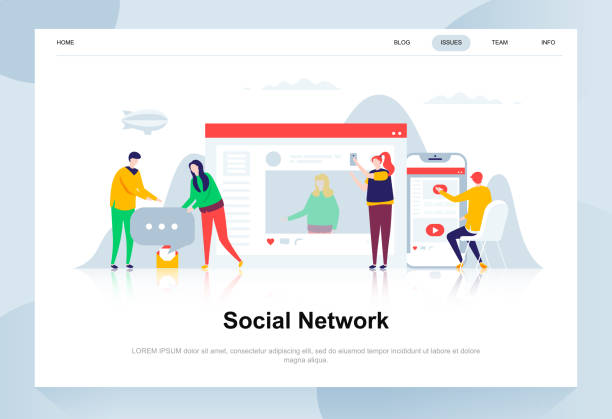
After completing the corporate website design stages and launching it, the work does not end; instead, the crucial and vital phase of SEO (Search Engine Optimization) begins.
SEO is the process by which your website is optimized to rank higher in the organic search results of search engines like Google.
This is highly important because most internet users turn to search engines to find the information, products, or services they need, and they tend to click on the first links that appear in the search results.
If your website is not on the first pages of search results, it will effectively be invisible to your target audience.
Optimizing an organizational website for SEO should begin at the very outset of the business website design process, not after its completion.
This includes selecting appropriate keywords that your audience uses for searching, properly structuring the website so that search engines can easily crawl and index it, and creating high-quality, relevant content that appeals to both users and search engines.
Key SEO elements in corporate website design include technical SEO (such as site speed, URL structure, XML sitemap, SSL usage), on-page SEO (such as optimizing title and meta descriptions, using headings, keyword density, internal linking), and off-page SEO (such as building high-quality backlinks from reputable sites).
A corporate website that is well-optimized for SEO not only attracts more organic (free) traffic but is also recognized as a credible and trustworthy resource in its field of activity.
This leads to increased brand awareness, improved credibility, and ultimately, higher sales and revenue.
Ignoring SEO in the corporate website design process can mean wasting many efforts and costs spent on design, because no matter how beautiful and user-friendly a website is, if it’s not seen, it cannot achieve its business goals.
Therefore, SEO is an integral and vital part of any successful organizational website design strategy.
Security and Maintenance of Corporate Websites After Launch
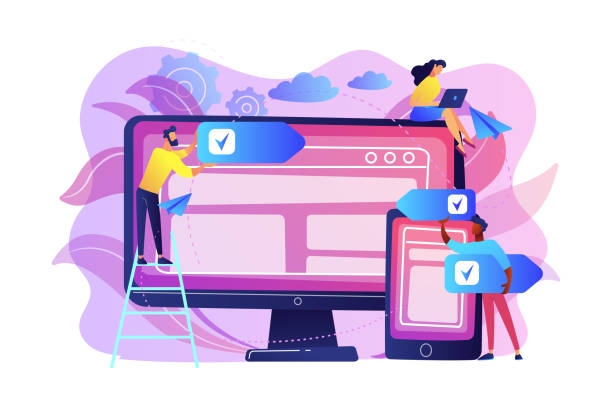
After the successful corporate website design and its launch, the work does not end; instead, the crucial and vital phase of security and maintenance begins.
A corporate website is like a valuable digital asset that requires continuous care and protection to maintain optimal performance and remain safe from potential threats.
Website security is of paramount importance because cyberattacks can lead to data loss, customer privacy breaches, damage to brand reputation, and even significant financial losses.
Therefore, investing in robust security measures is a priority for every corporate website design.
These measures include installing SSL certificates (for data encryption and showing the site as secure), using Web Application Firewalls (WAFs), regular updates of the Content Management System (CMS), plugins and themes, using strong passwords and two-factor authentication, and performing regular backups of all site information.
In addition to security, regular maintenance of the website is also essential to ensure its smooth and problem-free operation.
This includes checking for broken links, updating content, reviewing form functionality, monitoring loading speed, and fixing any bugs or technical errors.
A website that is not well-maintained may gradually experience performance degradation, a drop in search engine rankings, and a poor user experience, all of which harm the company’s reputation.
Furthermore, maintenance involves monitoring traffic and user behavior through analytical tools like Google Analytics to understand usage patterns and implement necessary improvements.
This proactive approach to maintenance helps you identify and resolve potential issues before they escalate into crises.
Many companies prefer to entrust these vital tasks to specialized corporate website design companies that offer comprehensive support and maintenance services.
This allows the company’s internal team to focus on core business activities, while the website remains secure, up-to-date, and accessible at all times.
Remember that a successful corporate website requires continuous commitment to security and maintenance to function as a powerful tool in support of your business objectives.
Content is King: Strategic Content Planning
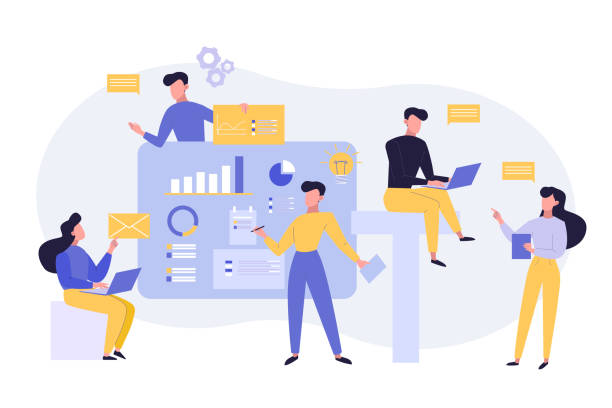
In the world of corporate website design and digital marketing, there’s an old but ever-relevant saying: “Content is king.” This statement is literally true, because even with the best and most beautiful corporate website design, if there’s no high-quality and relevant content, the website cannot achieve its goals.
Strategic content planning is a vital process that ensures your content is not only engaging and informative but also directly supports your business goals and meets the needs of your target audience.
The first step in this process is a deep understanding of your target audience: Who are they? What needs, questions, and challenges do they have? By answering these questions, you can create content that directly resonates with them and provides real value.
Content can be presented in various formats, including blog articles, product and service descriptions, instructional videos, infographics, case studies, customer testimonials, Frequently Asked Questions (FAQ), and company news.
Each of these formats can be used in a different way to attract and engage with users.
For example, blog articles can serve as a tool for SEO and attracting organic traffic, while case studies can help showcase successes and build trust.
In content planning for an organizational website, content should be regularly updated and published.
This not only helps keep the site fresh and attract the attention of search engines but also demonstrates that your company is active and up-to-date with the latest developments.
Furthermore, it must be ensured that the content is consistent with your brand’s voice and reflects the company’s values.
Naturally incorporating relevant keywords into content helps improve SEO ranking, but more importantly, content should be written for humans, not just for search engines.
Content that provides useful and accurate information will ultimately be effective for both users and SEO.
Finally, attention should be paid to monitoring content performance.
Using analytical tools, one can determine which content receives the most views, how long users stay on content pages, and which content leads to more conversions.
This data helps you optimize your content strategy and make smarter future investments.
In truth, high-quality content is the beating heart of every successful corporate website design, and without it, the website cannot fully realize its potential to attract, inform, and convert audiences into customers.
Key Content Types for a Corporate Website
| Content Type | Main Goal | Example |
|---|---|---|
| Blog Articles | Increase organic traffic, provide expert information, answer questions | “Comprehensive Guide to Choosing the Best CRM Software for Your Business” |
| Service/Product Pages | Detailed introduction, features and benefits, encouraging purchase/use | Dedicated page for “Corporate Website Design Services” |
| Case Studies | Prove success, build trust, demonstrate real-world application | “How Company X Experienced 30% Sales Growth with Our Solution” |
| Instructional/Introductory Videos | Provide visual information, increase engagement, attract new audience | Short animated introduction of company services |
| Frequently Asked Questions (FAQ) | Answer common questions, reduce call volume, improve UX | “Frequently Asked Questions About the Website Design Process” |
| Customer Testimonials | Build trust, prove credibility, encourage decision-making | “Our Customers’ Satisfaction with Web Design Services” |
Analyzing and Monitoring Corporate Website Performance

After you have completed a corporate website design and launched it, your work is not over.
In fact, there is a crucial and ongoing phase to ensure the website’s effectiveness and efficiency: performance analysis and monitoring.
This process allows you to gain a deep understanding of how users interact with your website, identify strengths and weaknesses, and make data-driven decisions for continuous improvement.
Analytical tools like Google Analytics and Google Search Console provide valuable insights into site traffic, traffic sources (organic search, social media, direct links, etc.), user behavior (pages they visit, time spent on site, bounce rate), and conversion rates (number of visitors who complete a specific action, such as filling out a contact form or making a purchase).
By analyzing this data, you can find answers to questions such as “Are our marketing campaigns effective?”, “Which pages need content or UX optimization?”, and “How do users reach our site?”
These insights are extremely valuable for improving corporate website design, marketing, and sales strategies.
Regular performance monitoring also helps you quickly identify technical issues, such as server errors, broken links, or loading speed problems that can disrupt user experience and harm your site’s SEO.
For instance, if you notice an unusually high bounce rate on a specific page, this indicates that the content or design of that page needs review and improvement.
Also, by monitoring the keywords users employ to find your site, you can refine your content strategy and target new keywords.
In the long run, performance analysis and monitoring are an indispensable part of any successful business website design.
This continuous process allows you to keep your website optimized, adapt to changes in user behavior and search engine algorithms, and ultimately achieve your business goals.
Without these analyses, you will be navigating in the dark and missing out on significant opportunities for growth and improvement.
Therefore, for any company engaged in corporate website design or possessing a corporate website, data monitoring and analysis are an absolute necessity.
Does losing customers who visited your site to buy bother you?
Rasawb is your specialized solution for having a successful online store.
✅ Significantly increase your online sales
✅ Build trust and professional branding among customers⚡ Get free consultation from Rasawb specialists!
Common Mistakes in Corporate Website Design and How to Avoid Them
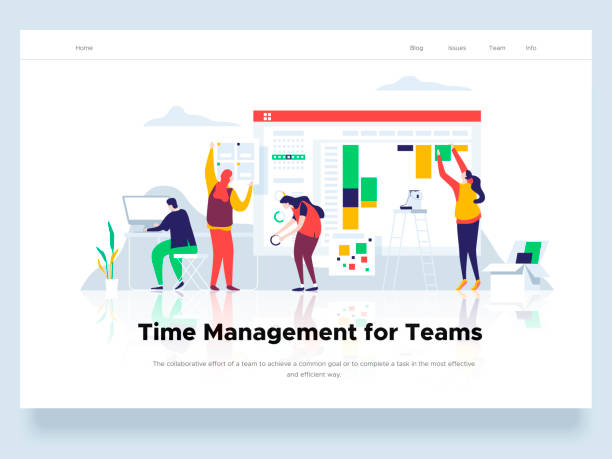
While corporate website design can be a powerful tool for business growth, there are common and avoidable mistakes that can seriously harm its effectiveness.
Understanding these mistakes and knowing how to prevent them is key to success in organizational website development.
One of the biggest mistakes is ignoring User Experience (UX) and User Interface (UI).
If your website is confusing, slow, or difficult to navigate, users will quickly leave it.
To avoid this, invest in user-centered design, conduct usability tests, and take user feedback seriously.
Another common mistake is non-responsive design.
With the increasing use of mobile, a website that does not display well on various devices loses a large portion of its audience.
Ensure that your business website design is fully responsive and performs excellently on any screen size.
Low-quality or inconsistent content is also a major flaw.
Outdated content, full of grammatical errors, or lacking value can harm your brand’s credibility.
To avoid this, have a strong content strategy, regularly update your content, and use professional writers.
Ignoring SEO is also a costly mistake.
A beautiful website has no value if it is not seen in search engines.
From the very beginning of the corporate website design project, consider SEO and seek help from an SEO specialist to ensure your site is properly optimized.
Also, the lack of clear Calls to Action (CTAs) can mean losing potential customers.
Users should clearly know what the next step is after viewing your content.
Use clear and prominent CTA buttons that encourage users to perform the desired action (such as contacting, downloading, purchasing).
Weak security can also be disastrous.
Ignoring website security can lead to cyberattacks, data loss, and reputation damage.
Use SSL certificates, strong passwords, and regular updates.
Finally, ignoring data analysis is a mistake that prevents continuous improvement.
Without monitoring website performance, you cannot identify and fix weaknesses.
Regularly use analytical tools and make data-driven decisions.
By avoiding these common mistakes, you can ensure that your corporate website design will become a high-yield investment.
The Future of Corporate Website Design and New Trends

The world of corporate website design is constantly evolving and advancing.
With the emergence of new technologies and changing user expectations, what is considered an advanced website today might be obsolete tomorrow.
Therefore, for any company looking to maintain a competitive edge, understanding and adapting to new trends in business website design is crucial.
One of the most important future trends is Personalized User Experience (UX).
Websites will increasingly use user data to deliver content, products, and experiences specifically tailored for each individual.
This leads to increased engagement and conversion rates.
Artificial intelligence (AI) and Machine Learning (ML) will play an increasing role in corporate website design, from advanced chatbots and virtual assistants to automated SEO optimization and predictive user behavior analysis.
These technologies allow websites to be smarter and more responsive.
Voice design and voice search are also on the rise.
With the popularity of voice assistants like Siri and Alexa, websites must also be optimized for voice interaction, and their content should be tailored for voice searches.
Progressive Web Apps (PWAs), which offer a combination of the best features of web and mobile applications, are emerging as a new standard.
PWAs are fast, reliable, and installable, providing an unparalleled user experience even offline.
Furthermore, greater focus on Accessibility for people with disabilities is an important trend.
Websites should be designed to be usable by all users, regardless of their abilities.
This is not only an ethical imperative but also helps expand the audience reach.
Micro-interactions and subtle animations will also be increasingly used to enhance visual appeal and improve small user interactions.
These small elements can significantly improve the user experience.
Finally, sustainability and Green Design will also become a significant concern, focusing on optimizing websites for lower server energy consumption and reducing environmental impact.
Companies that incorporate and adapt to these new trends in their corporate website design strategy will be leaders in the digital future and can establish more meaningful connections with their audience.
Frequently Asked Questions
| Question | Answer |
|---|---|
| 1. What is corporate website design? | Designing a dedicated website to introduce a company, its products, services, history, and contact methods to online audiences. |
| 2. Why does a company need a website? | Increased credibility and branding, 24/7 access to company information, attracting new customers, reduced marketing costs, and better service delivery. |
| 3. What are the most important sections of a corporate website? | Homepage, About Us, Services/Products, Contact Us, News/Articles (blog), and sometimes a Careers or Portfolio page. |
| 4. What is the importance of a corporate website being responsive? | A responsive website displays correctly on any device (mobile, tablet, laptop) and provides a better user experience, which is also beneficial for SEO. |
| 5. What is the role of SEO in corporate website design? | SEO helps the company’s website achieve higher rankings in search engine results like Google and attract more visitors. |
| 6. What does security mean in a corporate website, and why is it important? | Security involves protecting company and user information against cyberattacks, malware, and unauthorized access, which is vital for maintaining trust and preventing damage. |
| 7. What type of content is suitable for a corporate website? | Professional and engaging content includes descriptive texts for services/products, high-quality images, explanatory videos, industry-related articles, and testimonials. |
| 8. What is a Content Management System (CMS), and why is it useful for a corporate website? | A CMS is a system like WordPress that allows for managing and updating website content without needing programming knowledge. |
| 9. Why is corporate website loading speed important? | High speed improves user experience, reduces bounce rate (visitors do not leave the website), and positively affects search engine rankings. |
| 10. What are the main stages of designing a corporate website? | Includes planning and needs analysis phase, UI/UX (User Interface and User Experience) design, coding and implementation, testing and launch, and then continuous support and updates. |
And other services of Rasa Web Advertising Agency in the field of advertising
Smart Conversion Rate Optimization: A dedicated service for online growth based on real data.
Smart Content Strategy: A professional solution for digital branding focused on customizing user experience.
Smart UI/UX: A fast and efficient solution for improving SEO ranking with a focus on marketing automation.
Smart Direct Marketing: Professional optimization for increasing sales using custom programming.
Smart Customer Journey Map: Professional optimization for customer acquisition using key page optimization.
And over hundreds of other services in the field of internet advertising, advertising consultation, and organizational solutions
Internet Advertising | Advertising Strategy | Advertorial
Resources
Best Practices in Corporate Website Design
Business Growth with Corporate Website Design
Comprehensive Guide to Corporate Website Design
Success Factors in Corporate Website Design
? Are you looking for significant growth for your business in the digital world? Rasawb Afarin Digital Marketing Agency, with its expertise in SEO, targeted advertising, and secure and professional website design, paves your path to success.
📍 Tehran, Mirdamad Street, next to Bank Markazi, Southern Kazerun Alley, Ramin Alley, No. 6

